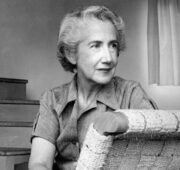Point out U of New York P, 1998, pp.
To cite an essay in MLA design and style, you need to have fundamental facts which includes the creator(s), the essay title, the ebook title, editor(s), publication yr, publisher, and web site numbers. The templates for citations in prose, parenthetical citations, and works-cited-listing entries for an essay by several authors, and some illustrations, are presented below:In-textual content quotation template and example:For citations in prose, use the initial identify and surname of the creator (e. g. , Mary Strine).
- How would you create a rhetorical analysis essay?
- What exactly is convincing essay?
- What exactly is a verdict within an essay?
- How will you create a conclusions paragraph?
For resources with two authors, use both full writer names in prose (e. g.
, Mary Strine and Beth Radick). For resources with a few or more authors, use the initial name and surname of the to start with creator followed by “and others” or “and colleagues” (e. g.
Precisely what is a groundwork paper?
- How would you publish a body chemistry section with an essay?
- How would you post a topic sentence?
- How will you proofread an essay?
- How should you publish a private essay?
- How would you compose a explanation essay?
- Exactly how do you edit an essay?
, Mary Strine and other folks). In subsequent citations, use only the surname of the to start with author followed by “and other individuals” or “and colleagues” (e. g. , Strine and many others). In parenthetical citations, use only the author’s surname.
Just how do you write a bibliography?
For resources with two authors, use two surnames (e. g.
, Strine and Radick). For resources with three or extra creator names, use the very first author’s surname adopted by “et al. “Citation in prose:First mention: Mary Strine…Subsequent mention: Strine…First point out: https://www.reddit.com/r/TrueEssayReviewer/comments/13juul4/academized_review/ Mary Strine and Beth Radick…Subsequent mention: Strine and Radick…First mention: Mary Strine and colleagues ….

or Mary Strine and others. Subsequent occurrences: Strine and colleagues …. or Strine and many others. rn…. (Strine and Radick). Works-cited-list entry template and illustration:The title of the essay is enclosed in double quotation marks and utilizes title scenario.
The reserve or selection title is specified in italics and makes use of title scenario. Surname, First Name, et al. “Title of the Essay. ” Title of the E book , edited by Editor(s) Name, Publisher, Publication 12 months, web site variety.
Strine, Mary M. , et al. “Analysis in Interpretation and Effectiveness Reports: Developments, Problems, Priorities. ” Speech Communication: Essays to Commemorate the 75th Anniversary of the Speech Communication Association , edited by Gerald M. Phillips and Julia T.
Wood, Southern Illinois UP, 1990, pp. Penn State University Libraries. Overview In-textual content Quotation Citing Generative AI Citing World-wide-web Webpages and Social Media Citing Content Citing Publications Citing Business enterprise Reports Other Formats APA Model Quiz. Using In-textual content Citation. Include an in-text quotation when you refer to, summarize, paraphrase, or quote from a further source. For just about every in-textual content citation in your paper, there must be a corresponding entry in your reference checklist. APA in-textual content citation model works by using the author’s very last identify and the calendar year of publication, for instance: (Field, 2005). For direct quotations, include things like the web site variety as properly, for example: (Discipline, 2005, p. For resources such as sites and e-textbooks that have no web site figures , use a paragraph variety, for instance: (Area, 2005, para. A lot more information on direct quotation of sources without having pagination is offered on the APA Model and Grammar Rules world-wide-web web site. Example paragraph with in-textual content quotation. A number of researchers in the linguistics subject have developed teaching packages created to increase native speakers’ capacity to recognize accented speech (Derwing et al.

















